A collection of conversations with a diverse range of local and regional creatives
Library Conversations for SGABF2020
We examined the systems that support art book making and independent art book publishing in Singapore and the region.
A Closer Look for SGABF2019
We gathered perspectives on our zine and art book culture, and discuss the possibilities of self-publishing today.
21 Creatives for SGABF2018
We sat down with 21 creatives of various disciplines to learn about their practice and asked each of them to fill up a blank page in a notebook.
Robert Zhao
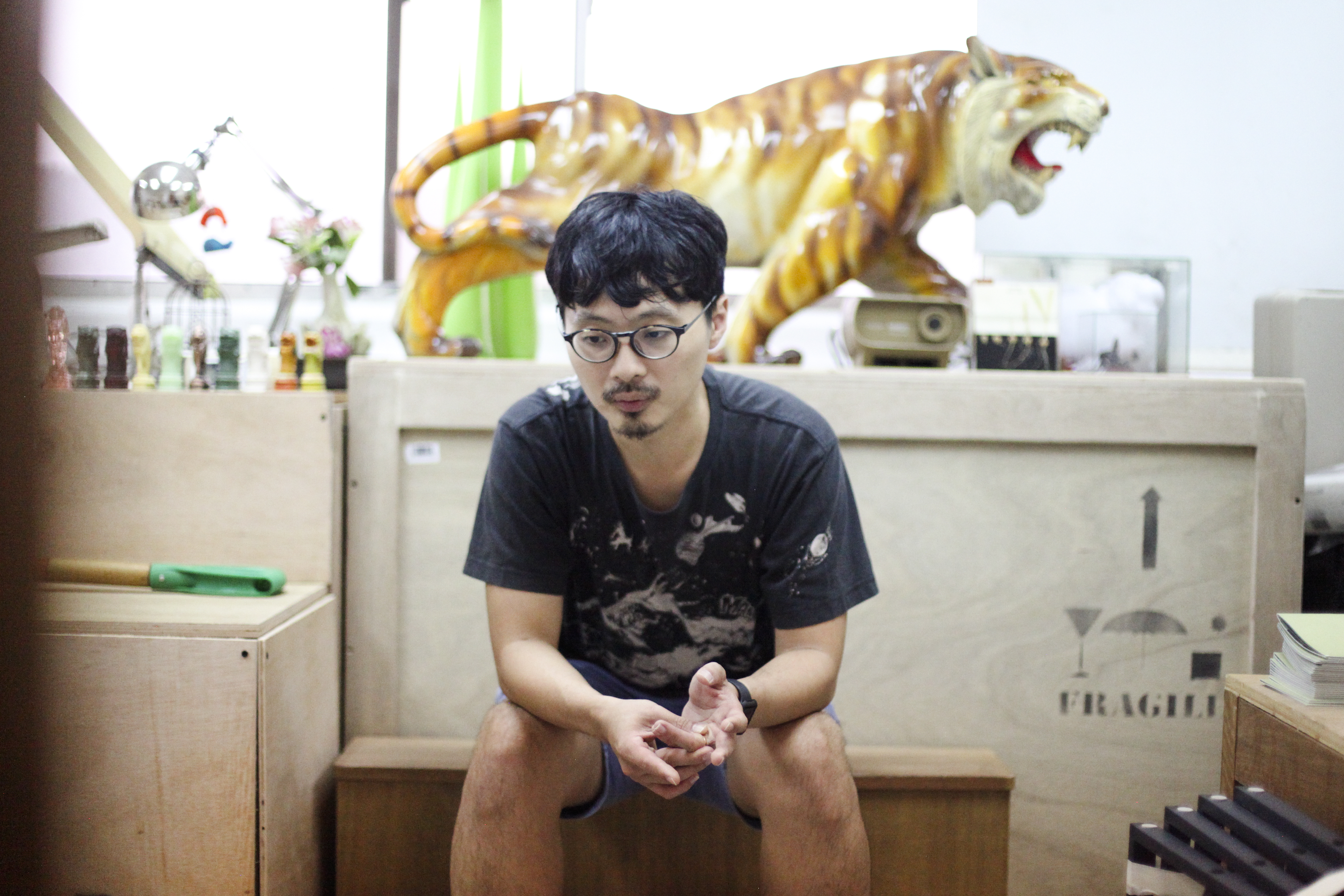
SGABF: Hi Robert, thanks for having us over at your studio. What are you working on today?
ROBERT ZHAO (RZ): I had a meeting with Gideon and Jamie from Temporary Press. They are working on the second edition of Singapore, Very Old Tree. It’s a project I did in 2015 in which I interviewed 30 people with personal stories of old trees. The content is very specific so I did not expect many people to like it, mainly because I thought trees made colder subjects than animals. I had the impression that birds and insects would seem more charismatic and trees were more difficult to relate to. Most of my books don’t sell, but this was one of those that sold. As it turns out, even after selling out, people were still asking about it. That is why I decided to republish it.
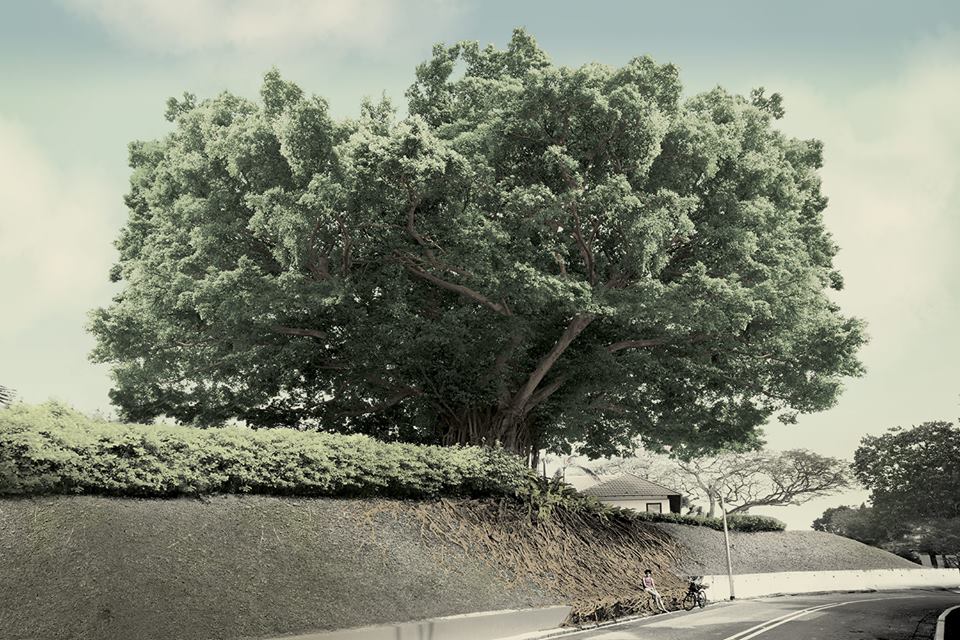
Singapore, Very Old Tree, Robert Zhao. Photo Credit: Tongue Journal
SGABF: How do you go about looking for a designer who resonates with your practice?
RZ: I try to look for books that I like locally and see how the designers work with the content. Of course the designer must also be interested in my practice. I leave the technicalities to them because I’m already working on printing and framing my own photographs. Most of my meetings with the designers at the beginning are about the concept; what the work is really about and what the book should be doing. After that I trust them to do whatever they want. You must have that chemistry; it’s important to find a designer that really understands your work so they can help translate it into a book.
As an artist, you’re always just talking to yourself. You’re thinking and doing everything yourself until you set up the exhibition, or you speak to someone who has no idea what you’ve been thinking for the last three months, then they ask a lot of What’s this? and What’s that? And you realise, Actually, I also don’t know. You’re forced to make connections that you perhaps haven’t thought about previously or that you’re trying to avoid. Once the book comes out, I guess you can be abstract in some parts but you have to be logical also. The narrative has to flow and the designers are usually quite observant about how the information flows. So that dialogue is very good for me.
SGABF: You have been making books for almost 10 years now, starting with The whiteness of a whale. How did you start?
RZ: The whiteness of a whale was created in 2010. Yes, it has been almost 10 years!
In 2010 I was doing a residency at the Fukuoka Asian Art Museum, and I went to all the different sites that used to do whaling. I wanted to find out why the Japanese were still eating and killing whales. I had a lot of research, facts, and narratives so I thought these texts should be presented in a book. I could’ve included it in the exhibition but it places a big burden on the audience when they’re negotiating the exhibition. I didn’t know why but I just thought I needed to make a book, so I started to compile it myself. It just felt like a reasonable and meaningful medium for this body of work.
My second book was for my MA, and that was easy because I was a/the designer. I went to look at existing science journals and kind of replicated the design, the paper. I just tweaked everything into my own project. So actually a lot of my work is trying to mimic different forms — even the title for my book Christmas Island, Naturally is taken from an existing book.
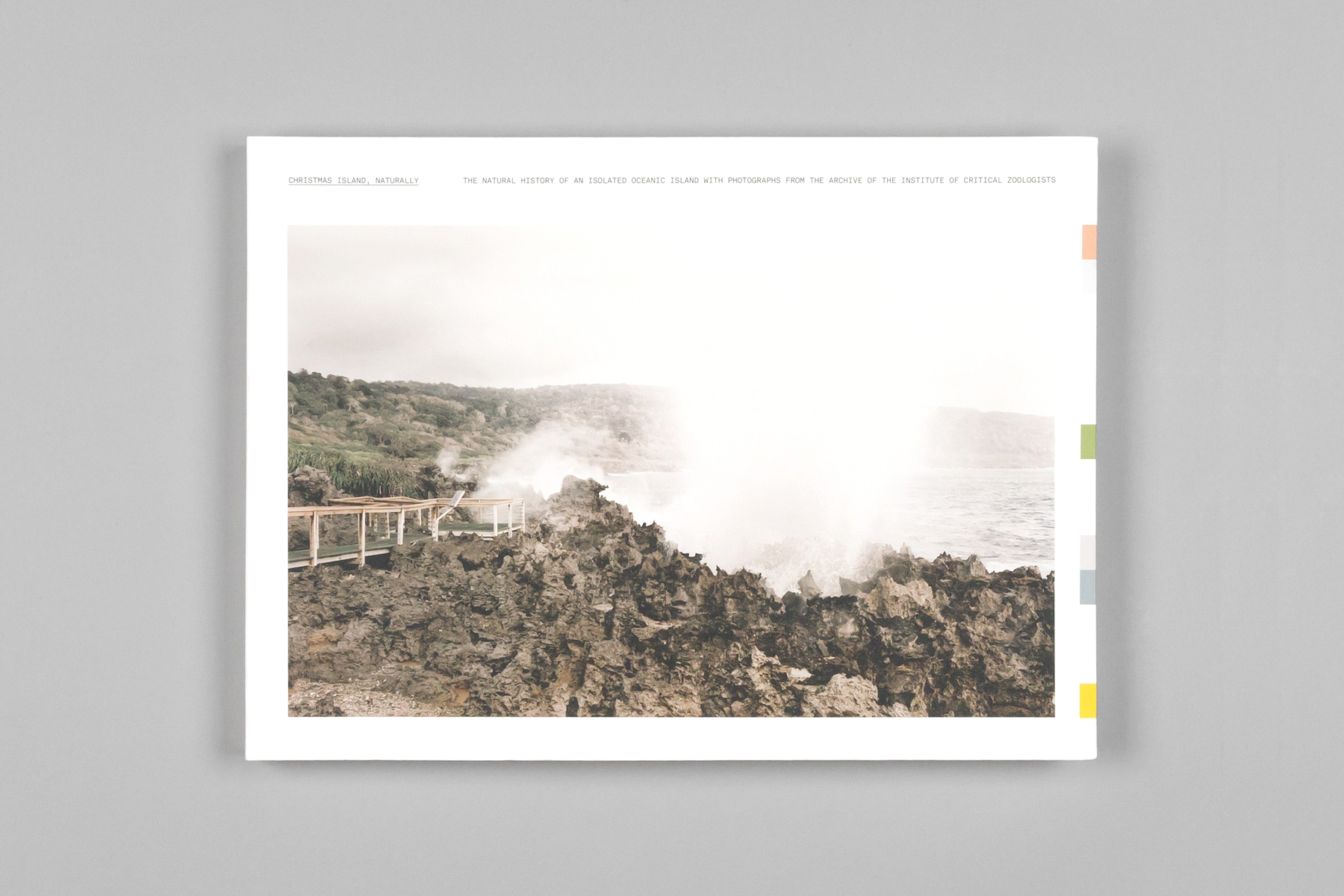 Christmas
Island, Naturally, Robert Zhao. Photo Credit: H55
Christmas
Island, Naturally, Robert Zhao. Photo Credit: H55
SGABF: How was the progression from making zines to art books?
RZ: I started with zines when I was a student because that was all I could afford. The zine is much more economical because they go longer and further than exhibitions. More people get to see the work — which is also why I went on to make books. I started working with other designers as I became more aware of the need to be sensitive to the paper, the layout and the printing. As an artist, I’m already exploring ways of working within a space, how my artworks should behave, the framing and printing of the photographs, things like that. There are a lot of technical things I’m already trying to master. When it comes to the book, however, it’s a whole different ball game from an exhibition and there are designers who are dedicated to these experiences. It’s something I cannot achieve alone.
As I took on bigger exhibitions, I at least got paid so I started putting most of my earnings from art-making back into my work. I used the money to buy archives, old photographs and printed my books with them. Book-making is not a profitable thing, it’s not going to give me a 200% profit immediately; it’s a slow burn. But I’m very happy to see parts of my practice exist as books. My images are about ironic stories of human and nature that fall out of the mainstream narrative, not typical ones that are celebratory. It’s why I self-publish books; they are an expression of my art. No publisher would take on my books because it just wouldn’t sell.
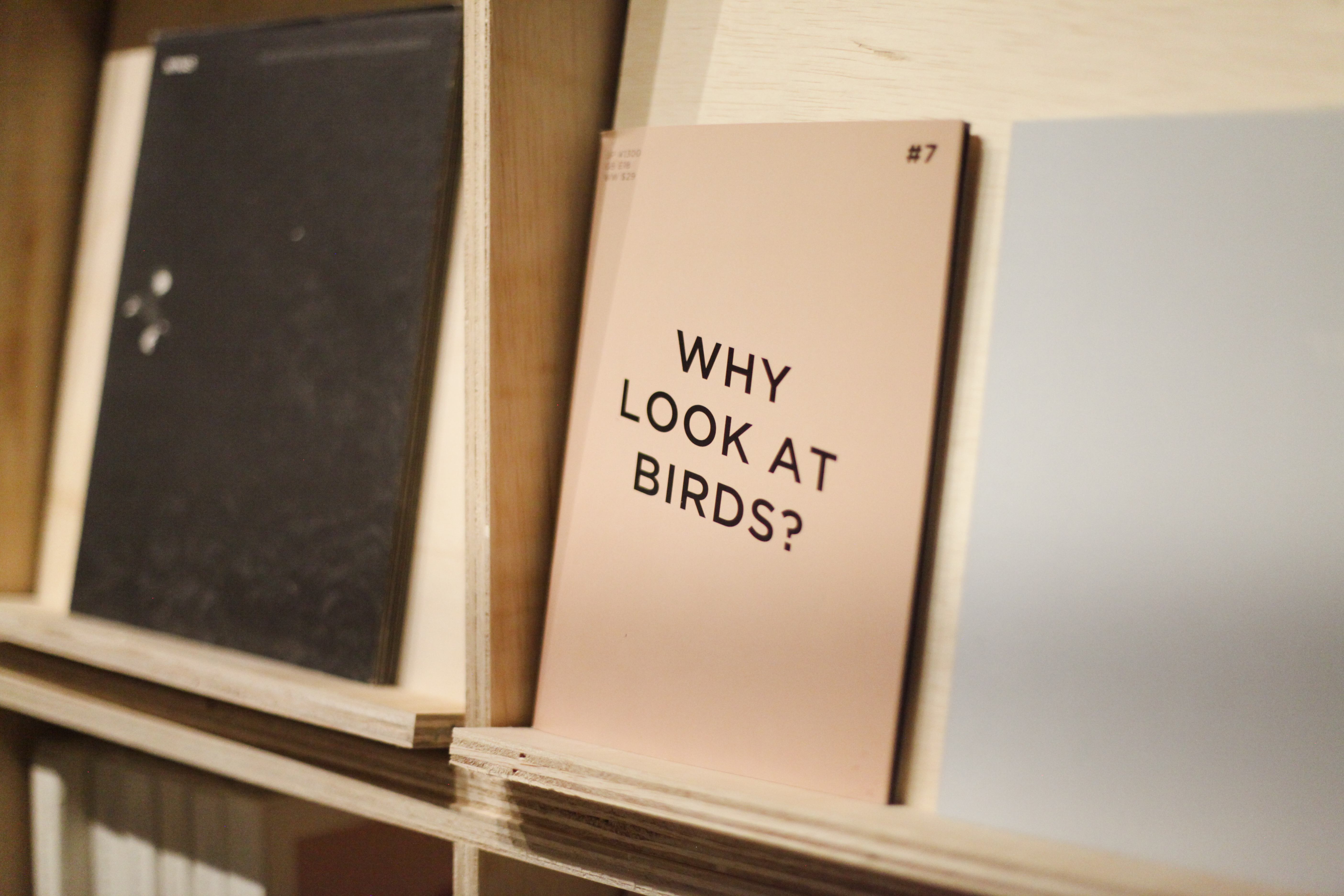
Photo Credit: SGABF
SGABF: The Book and the Exhibition are both very different methods of presenting a body of work, both of which you are familiar with. How are the considerations similar or different from when you set up a show and when you make a book?
RZ: I think of my work in the form of a book, first and foremost. The exhibition is the last thing I think about because it’s abstract. The narrative is very important to me so the book provides a full sequence of everything I need to express in the project. Hopefully after I publish the book I have two to three months to reflect on the work because when you’re fresh out of a project, you cannot think very clearly.
From the book, I can see which parts I can extract and form footnotes that are crucial for the exhibition. There was a period when I tried to not have any text at all in the exhibition, but I realised it’s extremely tough because people are always looking for meanings. In the book I can be very precise and to the point but you don’t realise it’s actually fictional, so I’m just helping you understand as much as I want you to.
In an exhibition, I’m often more abstract with the text and work. The text doesn’t need to function literally as a caption. I try to give an abstract point of what the work could be about. People can make generalisations about your work with hints of facts from elsewhere. The text doesn’t need to actually be talking about the work you’re looking at.
My works are photographs that come with captions that are very important for the work. It’s not just a singular work, it’s work that comes in a series. I look for narratives and I use images to illustrate or capture these narratives. I use text to add another dimension to the images so when I sequence the images out, there’s a beginning, a middle and an end. All this can be controlled very effectively with a book. What I like about a book is that it’s always a one-on-one experience. You hold it in your hands, you open up, you look at the front, you browse — there’s a sequence in place, so my narrative is tightly in control with my audience. And I like that. I like to have that sequence with my audience. It’s also a lot more tactile. The papers, the printing, and the layout can kind of guide the viewer through the work differently.
With the exhibition — and with the audience plonked into a space — you are at the mercy of how the audience wants to negotiate with your work. It’s very hard to control a sequence, for example. To a certain extent, you can, but not as well as a book can.
SGABF: Do you feel that one has aided or hindered the other? Do you consider them separately?
RZ: The book has helped me to consolidate all the information that I have into a format that is logical. Most times my ideas come off very abstract until I speak to the designer, who has to understand the work. The design process is very important because through it, I get a better sense of what my work is or can be about.


A Guide to the Flora and Fauna of the World, Robert Zhao. Photo Credit: Courtesy of Artist
These days, my works take longer to produce because they are more research-intensive. I begin working on the book first before thinking about how the actual artwork will look. Book- and exhibition-making very much go hand in hand for me. It helps me as an artist to do the work at this point in time.
SGABF: You mentioned your work deals with a lot of fiction but the formats and mediums in which you work are very documentative and final. Nobody really questions the legitimacy of photography, for example. Does it affect how you work?
RZ: It’s very funny because what kind of art isn’t fictional? If I were a painter or a sculptor, people wouldn't always describe my work as a work of fiction. But because I’m a photographer and I make books, suddenly it tests the barriers of truth. Like a novel is fictional but at the same time so real, so you’re suspended in the state of wondering what’s real and what’s not; you’re negotiating between this boundary of world-making, fiction and truth.
A lot of facts that I uncover which are exciting for me are actually very boring for others. What I’m trying to do is narrate stories and make it exciting for the audience rather than purely present information, which would end up becoming a documentation.
I like photography because it’s so powerful that we don’t realise it at all. We become very naïve when we’re presented with a photograph. For example, pictures in advertisements and newspapers actually have very little to do with the product or story that they’re trying to sell. But we have become so comfortable with it. These images don’t have to have connections, they don’t even have to be genuine! I mean, some of us are more critical now, but in a general sense we are still quite flippant when it comes to reading images.
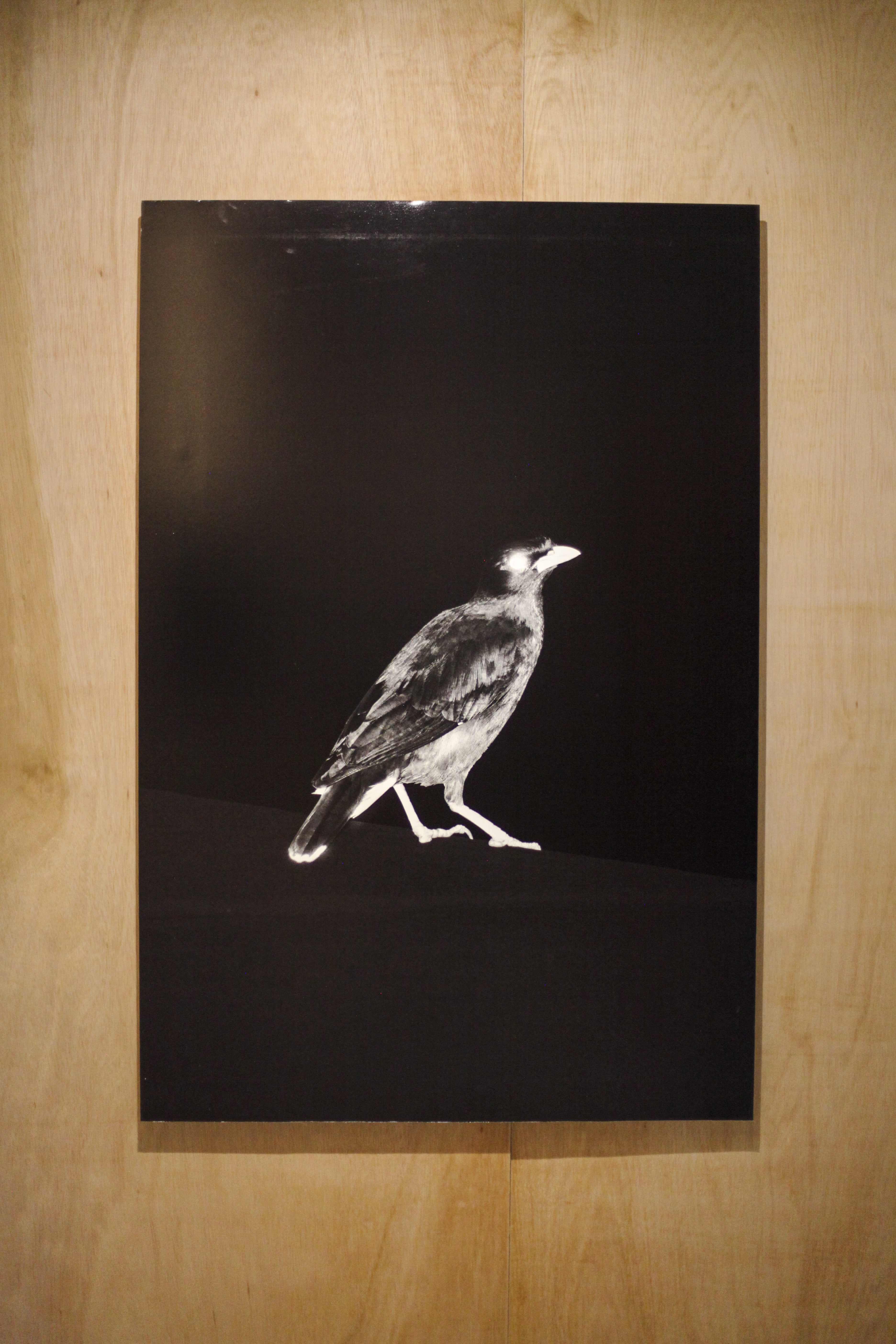
Artwork: Robert Zhao
SGABF: I was recently talking to Song Nian [from THEBOOKSHOW] and it seems like in Singapore it’s more common for photographers and designers to make books, rather than visual artists. Why do you think that is so?
RZ: I don’t think it’s limited to Singapore. It is generally very hard to find artists making books that are not catalogues. It’s not second nature for visual artists to make books because it is already so demanding to think of an exhibition. Perhaps a book to them has a utilitarian function, like a catalogue or a leaflet for the show.
As for designers, they already have the skill
sets to work with the book format well. This language may not apply to artists.
I guess you need a good publisher to translate artworks into a book too, like
what Roma Publications does. They strive to create artists’ books that do not
function merely as a catalogue.
The book as a medium needs to be handled well. It is easy to find a designer who can make a nice book but difficult to find one who can make a book based on a deep understanding of your work. A pretty book is easy to make, but a book that can translate your practice and work — that’s very hard.
The tones, printing and framing add to the character of the work, especially for photographs. For that reason, the process can be difficult if one doesn’t dedicate a great amount of time to study the form of the book.
We generally don’t publish art books here because there are many hindrances: storage, start up costs, the ability to handle the medium, lack of distribution channels, lack of circulation points. I don’t even know where my books can go besides SGABF because it’s just so difficult to distribute.
RZ: My books are published under The Institute of Critical Zoologists (a fictional scientific organisation), which is bodiless and formless. I like it when someone encounters my book, buys it from the website and ends up enjoying it. For someone to stumble on my fictional, real-looking website and then decide they want to partake in this institution by buying a book, or having a slice of this imaginary role in the form of a book, that for me is the best way for the work.
When it’s published by another publisher, it helps financially because I don’t have to pay for the publishing. But I’m not sure what happens to The Institute of Critical Zoologists because there is now another company involved in my work. I don’t know if it becomes more real. I like the strangeness that comes with the confusion and curiosity towards the fictional organisation, and the mysteriousness that’s still controlled by me. It’s important to have that relationship in my books. Also, without any publisher involved, I have no pressure of sales; I can slowly sell it over 100 years.

A Guide to the Flora and Fauna of the World, Robert Zhao. Photo Credit: H55
RZ: It’s tricky because some of my books have to be of a certain size for the work to make sense. So in the long run, it is barely sustainable as the production of my books are getting more and more expensive. For titles that are more niche, I try to print lesser editions and price them a little higher. And because I sell my books myself and through SGABF, I can keep my profit margins higher because there’s no distributor. So the one or two titles that sell better, like Singapore, Very Old Tree, sustain the rest that don’t sell as well.
Robert Zhao Renhui (b. 1982, Singapore) is a multi-disciplinary artist and the founder of the Institute of Critical Zoologists. His artistic practice addresses the human relationship with nature challenging accepted parameters of objectivity and scientific modes of classifications. Over the years, Zhao has appropriated codes and convention of documentary photography and museum display to compose compelling narratives. Amongst his more recent solo exhibitions in Singapore are The Nature Museum, commissioned by Singapore International Festival of Art (SIFA) and The Bizarre Honour, realized for OH! Open House, both in 2017. Zhao has undertaken residencies at the Musée du Quai Branly, Paris, France, the Kadist Art Foundation, San Francisco, United States, and the Fukuoka Art Museum, Japan. He was awarded Young Artist Award by National Arts Council in 2010 and is a finalist of the 2017 Hugo Boss Asia Art Award.
The book as a medium needs to be handled well. It is easy to find a designer who can make a nice book but difficult to find one who can make a book based on a deep understanding of your work. A pretty book is easy to make, but a book that can translate your practice and work — that’s very hard.
The tones, printing and framing add to the character of the work, especially for photographs. For that reason, the process can be difficult if one doesn’t dedicate a great amount of time to study the form of the book.
We generally don’t publish art books here because there are many hindrances: storage, start up costs, the ability to handle the medium, lack of distribution channels, lack of circulation points. I don’t even know where my books can go besides SGABF because it’s just so difficult to distribute.
SGABF: Aside from A Guide to the Flora and Fauna of the World which was only picked up by Steidl after you published your own edition, all your books are self-published. Wherein lies the value of self-publishing to you?
RZ: My books are published under The Institute of Critical Zoologists (a fictional scientific organisation), which is bodiless and formless. I like it when someone encounters my book, buys it from the website and ends up enjoying it. For someone to stumble on my fictional, real-looking website and then decide they want to partake in this institution by buying a book, or having a slice of this imaginary role in the form of a book, that for me is the best way for the work.
When it’s published by another publisher, it helps financially because I don’t have to pay for the publishing. But I’m not sure what happens to The Institute of Critical Zoologists because there is now another company involved in my work. I don’t know if it becomes more real. I like the strangeness that comes with the confusion and curiosity towards the fictional organisation, and the mysteriousness that’s still controlled by me. It’s important to have that relationship in my books. Also, without any publisher involved, I have no pressure of sales; I can slowly sell it over 100 years.
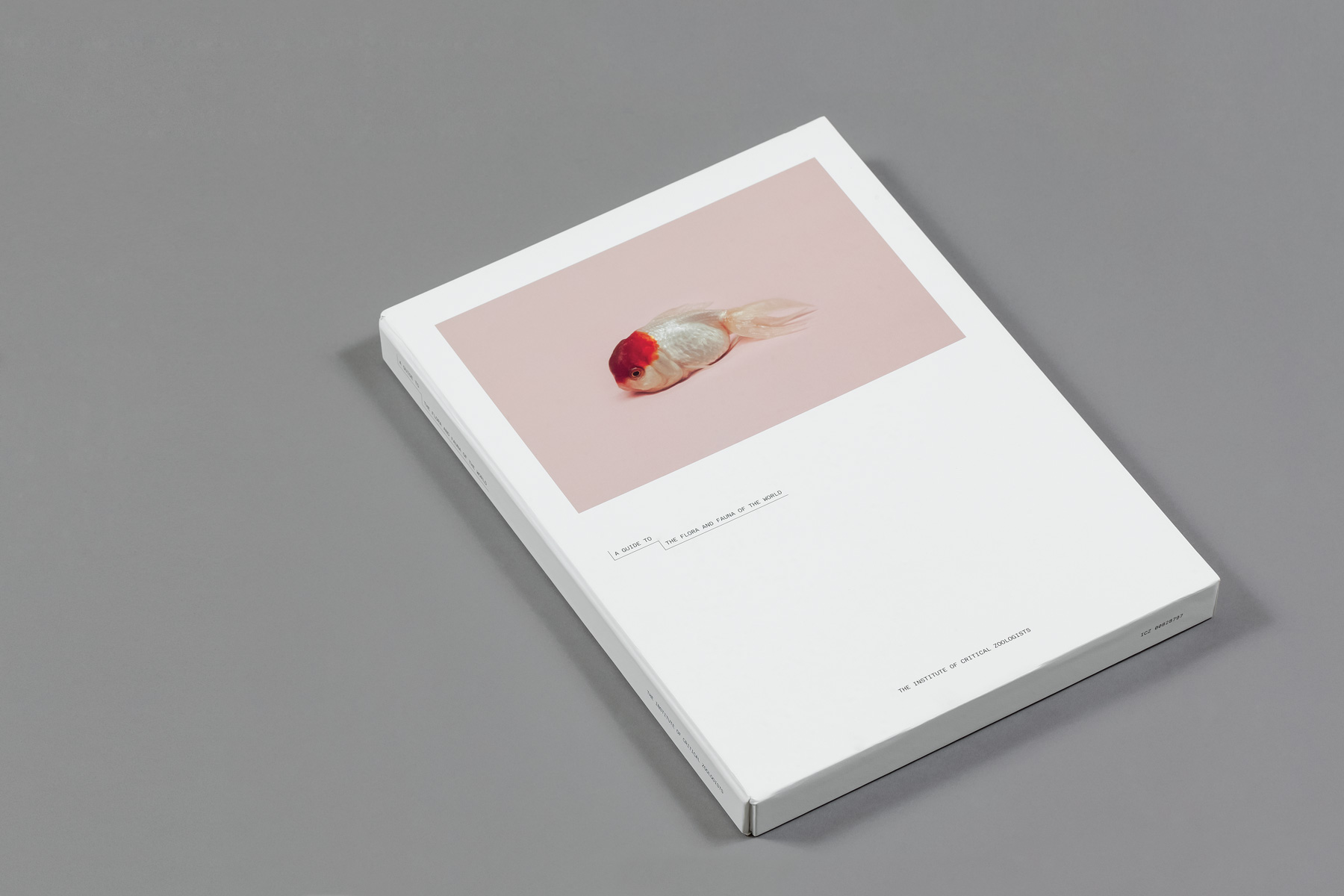
A Guide to the Flora and Fauna of the World, Robert Zhao. Photo Credit: H55
SGABF: Lastly, how do you sustain an art book-making practice, if at all?
RZ: It’s tricky because some of my books have to be of a certain size for the work to make sense. So in the long run, it is barely sustainable as the production of my books are getting more and more expensive. For titles that are more niche, I try to print lesser editions and price them a little higher. And because I sell my books myself and through SGABF, I can keep my profit margins higher because there’s no distributor. So the one or two titles that sell better, like Singapore, Very Old Tree, sustain the rest that don’t sell as well.
Robert Zhao Renhui (b. 1982, Singapore) is a multi-disciplinary artist and the founder of the Institute of Critical Zoologists. His artistic practice addresses the human relationship with nature challenging accepted parameters of objectivity and scientific modes of classifications. Over the years, Zhao has appropriated codes and convention of documentary photography and museum display to compose compelling narratives. Amongst his more recent solo exhibitions in Singapore are The Nature Museum, commissioned by Singapore International Festival of Art (SIFA) and The Bizarre Honour, realized for OH! Open House, both in 2017. Zhao has undertaken residencies at the Musée du Quai Branly, Paris, France, the Kadist Art Foundation, San Francisco, United States, and the Fukuoka Art Museum, Japan. He was awarded Young Artist Award by National Arts Council in 2010 and is a finalist of the 2017 Hugo Boss Asia Art Award.
© Singapore Art Book Fair 2025. All rights reserved.
For further enquiries, please contact us at info@singaporeartbookfair.org.
Singapore Art Book Fair is organised by
![]()
For further enquiries, please contact us at info@singaporeartbookfair.org.
Singapore Art Book Fair is organised by
